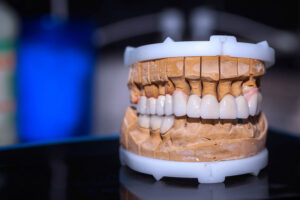TMJ is a terribly complex disorder that can vary widely in terms of symptoms and the severity of symptoms. Because of this, treatment can also vary widely. While some seek treatments like a soft food diet, others can seek out more dramatic treatment methods like botox or even surgery. Many who seek more extreme interventions have had unsatisfying results with their treatment providers. Today we’re going to look closely at an underrated treatment method that doesn’t require drugs or surgery: the bite splint.
The bite splint is popular because it’s a quick-working solution that isn’t permanent, providing flexibility of treatment. While a bite splint isn’t the right treatment for everyone, it’s a good start for many people suffering from TMJ symptoms. Read on to learn how a bite splint works, and if it could work for you.
What Is a Bite Splint?
A bite splint is similar to the types of mouthguard athletes wear, and really has a dual purpose. The first is to reposition your jaw during sleep to relieve tension and encourage healing, and the second is to protect teeth from any grinding or damage that may inflict further jaw damage (also damage to your teeth!).
The jaw and the temporomandibular joint are part of a complex, fragile system that has lots of moving parts. Unlike the simpler joints in the knees or the elbows, the temporomandibular joint needs to allow for all kinds of varied movement, yet must also be incredibly durable to handle the amount of work it does. With TMJ, the jaw is misaligned, so it is constantly experiencing tension. This ongoing tension can further damage your teeth and jaw, and lead to painful symptoms throughout your body.
The goal of a bite splint is to help your jaw find the proper position to rest in — a position without tension. By holding the jaw in the ideal position, the symptoms that have arisen from that tension will disappear, and further damage can be prevented.
How Does It Work?
For some patients, the bite splint will successfully retrain the jaw, and the patient can then be weaned off of the device. For others, wearing the bite splint at night will be enough to keep symptoms in check long-term. For yet others, a bite splint might simply be the first step to identifying the ideal bite and then using other methods, such as orthodontics or reconstructive dentistry, to permanently adjust the teeth for it.
Although the pace of recovery varies from person to person, most patients start to see relief from symptoms localized near the jaw, such as jaw pain, immediately. Marked improvement of more distant symptoms, such as headache, should be apparent within six weeks. Full relief may develops early as three months into treatment. By six months, the majority of people using bite splints have even seen relief of the more far-reaching symptoms.
If you have chronic headaches, jaw pain, and other symptoms, and you’re not happy with your current treatment, we can help. Please call (914) 526-2144 or email Advanced Dentistry of Mohegan Lake to learn whether TMJ treatment might help where other treatments have failed.





